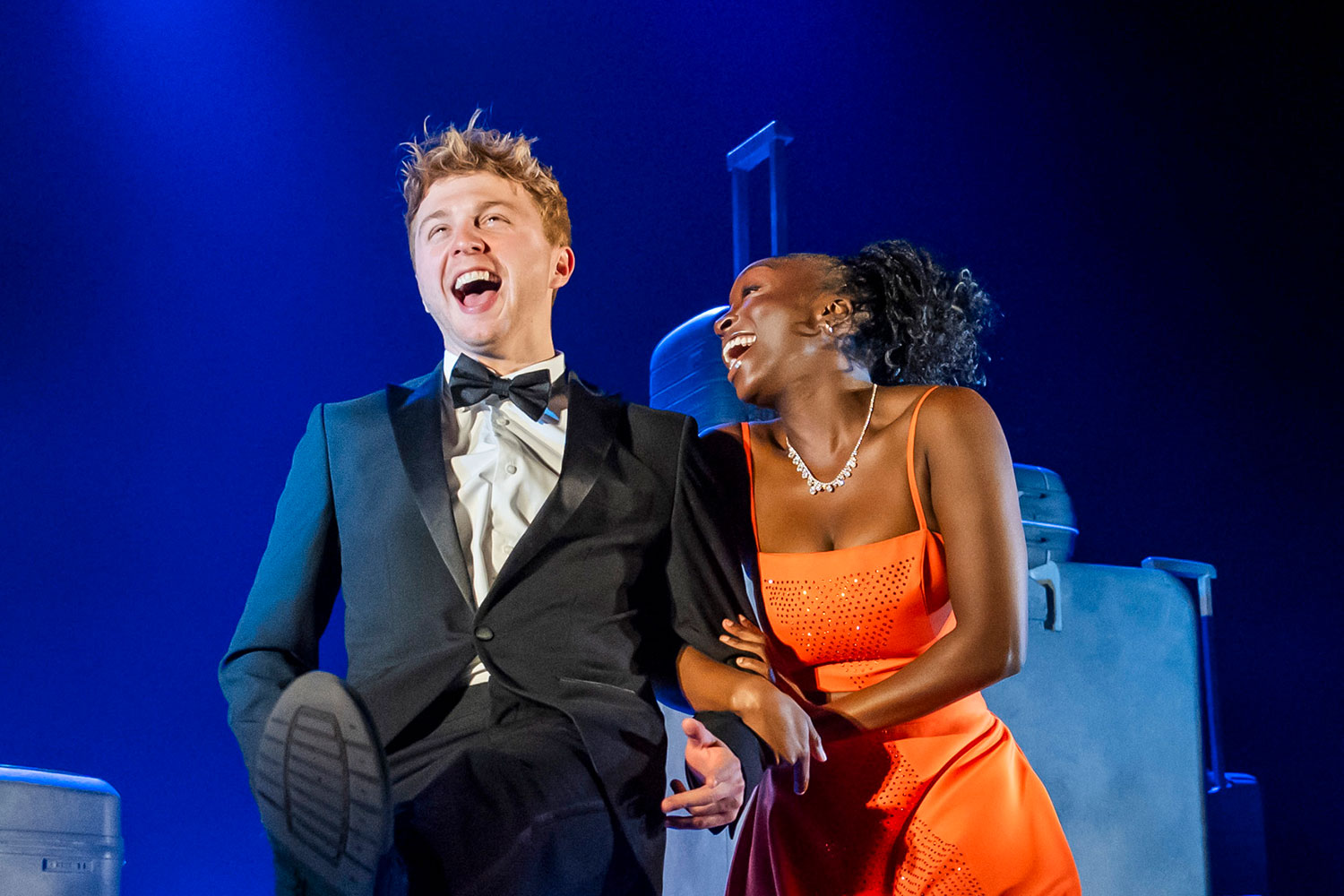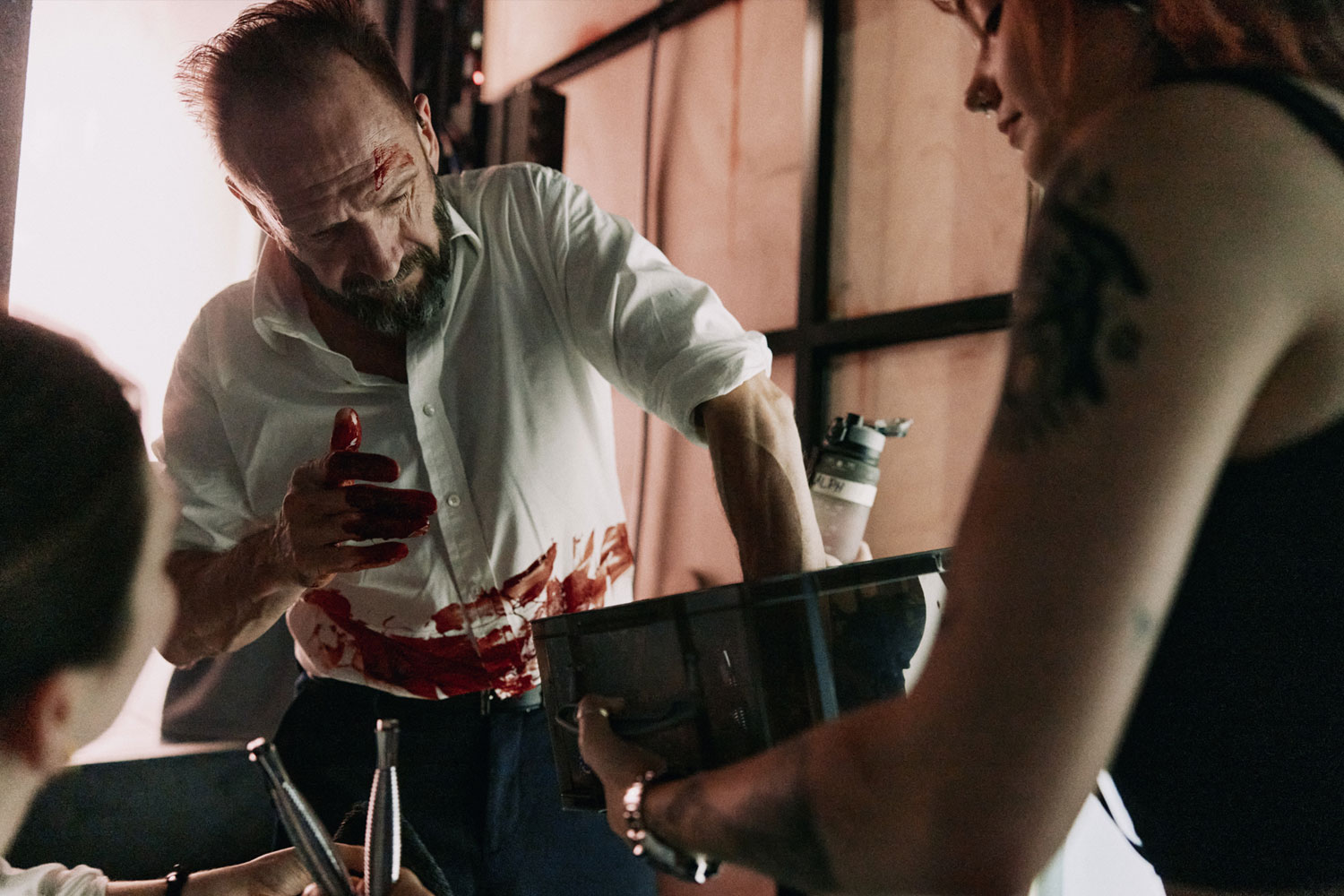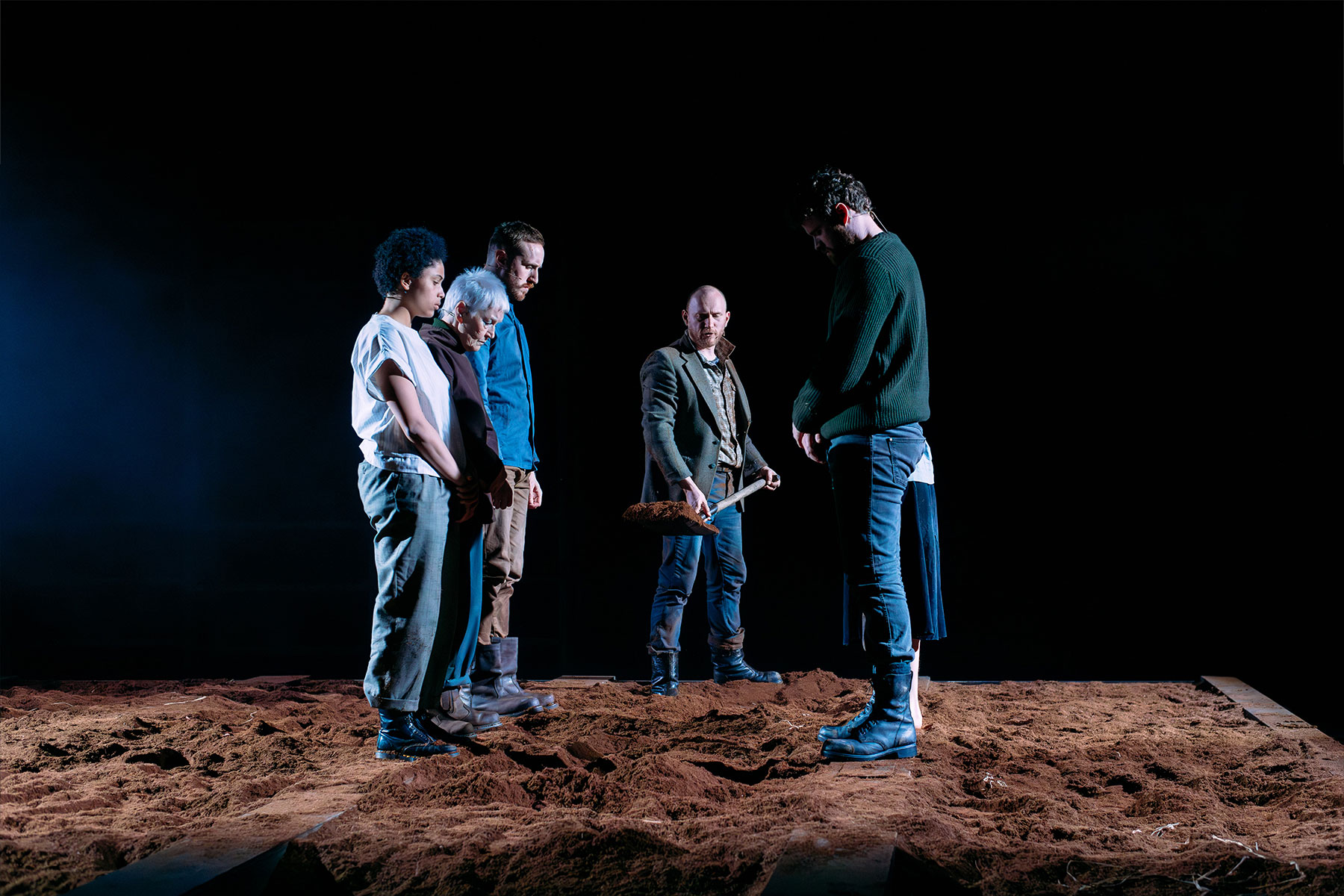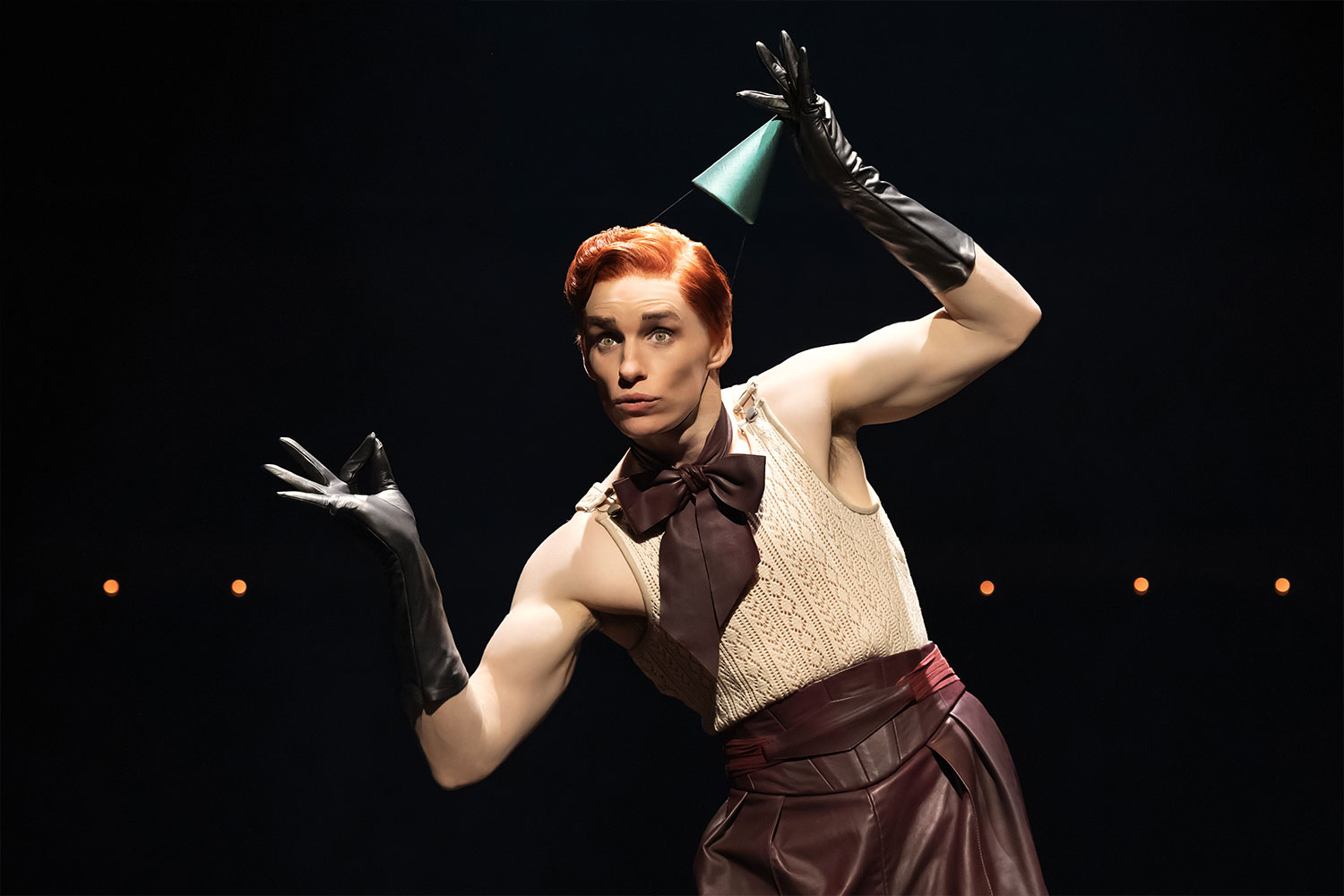Alastair Whatley On…Dancing At Lughnasa
Alastair Whatley is the creative director of the Original Theatre Company, which was formed in 2004. The Company tours productions all over the UK and over the last six years they have produced six touring shows, corporate commissions and a host of education projects travelling over 180,000 miles up and down the length and breadth of The United Kingdom playing to hundreds of thousands of people. Their latest production, Brian Friel‘s classic, Dancing At Lughnasa starts touring at the end of January, arriving at Oldham’s Coliseum Theatre on 22nd February.
Original Theatre have been going since 2004. How did the company come about?
The company began with the ambition to bring theatre produced with
tender loving care to as wide an audience as possible, so began an
exciting if financially precarious few years touring everywhere from
schools to football grounds to village halls and cliff tops, even the
odd theatre now and again! By 2008 we took the decision to stop fighting
the increasingly unpredictable Great British weather. I saw- with some obvious exceptions- regional theatres struggling to
programme seasons of good quality work and with the Arts Council cuts of
2008 effectively wiping out many touring companies there seemed a great
appetite for drama in the regions. It is certainly far too early to
make any claims about re-invigorating regional theatre and companies
like Headlong and ETT continue to pave the way in this regard, but in a
small way I hope that our small team driven by a strong passion for
producing top quality touring work is making an inroad that can be built
on in future years. In 2010 alone we played over 200 performances in
over 60 theatres proving, if nothing else, that the demand for high
quality theatre produced with a dose of TLC remains buoyant.
What attracted you to Dancing at Lughnasa?
In all honesty I knew the play only by reputation until Brian Friel’s literary agent pointed me in the direction of Dancing at Lughnasa. I had initially designs on doing Translations, however as soon as I read Lughnasa I was immediately enraptured with it. I read it in a single sitting from cover to cover and found it intensely moving. Michael’s yearning for a childhood that has long since passed into the annals of memory, the raging passions of the Mundy sisters burning inches from the surface threatening to boil over at any minute and the heartbreaking final scene all added a richness and complexity rarely found and something that grabbed me immediately by the heartstrings.
It’s a timeless piece of theatre but do you feel the need to add anything to the original to keep it fresh?
Having seen only the recent Birmingham Rep production, I don’t come to this production with any desire to stage a production that is anything other than faithful to Friel’s writing, I appreciate that for many this production of Dancing at Lughnasa will not be their first, and that there will be other productions fresh in the mind. But really this is immaterial, we are creating our own production based on our reaction to Brian Friel’s text and his marvellously drawn charatacters. I trust there will be much that is new, original and fresh in this production, but I am not going out there with a view to rewrite the play with any sort of revisionary concept.
Brian Friel has a wonderful way with language. Have you got a favourite line in the play and why do you like it?
It has become an oft worn cliché, but Brian Friel’s language is written with an almost musical sensibility; every beat, every pause and inflection is there for a reason and needs accounting for.That said one of Michael’s lines stood out for me very early on from that first reading and this line has taken on greater significance with every subsequent reading. In his final monologue Michael is talking about his memory of that ‘fateful summer of 1936’ and he tells us that ‘in that memory atmosphere is more real than incident and everything is simultaneously actual and illusory’. This crucial line is both revealing and so very true. Friel (as Michael) is telling us that there is always a gap between the reality of an event and our memory of that same even leaving us with a dual perspective; the atmosphere of memory- in this case all embellished with the hue of nostalgia and the brutal and tragic reality.
On a personal note at a recent family gathering, my own Grandmother who was a young girl herself in 1936 living in county Cork was shown a picture of her childhood home taken quite recently, although it has had some refurbishments it is very much the same house. She swore blind it was nothing like her family home. She insisted on there being a river in front of the house and that it resembled nothing like the house she remembered. This incident soured the occasion somewhat but it absolutely highlights Michael’s line and how it reverberates on a universal level revealing something quite profound about the nature of memory and how history on a personal and indeed more global level is never absolute. This is a theme touched on more fully in Friel’s play Making History written just before Lughnasa and I do think that there is a degree of dialogue between these two plays. It leaves us with a much more open and stylistic canvas on which to paint Michael’s memory, it is for me the most beautifully concise and eloquently drawn line in the play.
The women in the play are all very different but even Kate is likeable beneath her stoic veneer. How have the actresses helped you bring the play to life?
It is still early days with rehearsals beginning in earnest now, but from the casting sessions alone the actresses playing the sisters have already brought huge a wealth of detail to their characters. Something that really shone through was the fact that all the sisters were to a degree caught in an almost love/hate relationship with each other, something I’m sure emblematic of all families and people living in close proximity for elongated periods of time. They all have been accorded roles which they play out in order to survive from day to day, but this ‘role playing’ has I think eroded their own sense of identity. Rose, Agnes, Maggie, Chris and Kate all I think want to break out of the mould in which they have been cast, yet are stifled by the claustrophobia of of family life and the repressive Catholic expectations of rural Irish society. This claustrophobia is almost juxtaposed against the wide expanse and beautiful rugged landscape of Donegal which creates an ever escalating sense of conflict with the family home serving as both prison and refuge against the wider world.
The iconic scene where the ladies dance and let everything go is exhilarating. How has Lucie Pankhurst given vitality to this wonderful element of the play?
When the play was first staged in 1990 it benefited in some ways from the fact that the dance came wholly unexpectedly. As you describe it , it is now the ‘iconic’ moment associated with the play. Furthermore since the invasion of Riverdance on popular culture there is even more baggage to navigate, comparisons can be hard to avoid. Lucie and I started by just reading the stage directions for this moment in the play, covering two pages and written from the point of view of the sisters it is a remarkably written sequence on the page alone, it is already all there so we won’t veer too far from the course set by Brian Friel. Lucie has all sorts of ideas on how we go about staging the scene, we are currently exploring more pagan, ritualistic dances at the moment- one thing we are absolutely agreed on is that the dance should not be too heavily choreographed- it must have a sense freedom and of spontaneity and I imagine it will be slightly different every night. It is a very dangerous and emotional moment but it doesn’t work in isolation, it must be built up to. So we must get the start of the play off to the right start, ratchet the tension and pull the strings holding the family together tighter and tighter almost to breaking point, if we get that right the dance sequence should come naturally.
Dancing At Lughnasa is performed constantly – why do you think this is?
The play is based partly on Friel’s own family and his experience of growing up with his mother and his aunts to whom the play is dedicated. It is a deeply personal play that deals with family, with notions of ‘home’, with memory and with impending change. Lost childhood is something which has a universal and enduring fascination. You only have to look at the recent success of Toy Story 3 or the TV series Who do you think you are and of our increasing fascination with online genealogy to realise that we all have a complex and enduring relationship with our past and with the people and places that provided the foundation on which our future is built.
Dancing at Lughnasa presents us with a heartbreaking, bitter sweet exploration of a family standing unknowingly on the precipice of a new world. And whilst the play speaks of Irish society on a much broader level, I think what resonates with audiences above all else is this deeply personal journey of a young man reconnecting with his childhood and his memory of this brief snapshot in time as his family fights against all odds to remain together against the unstoppable march of progress.
Many audience mambers have seen the play several times, so how would you recommend the play to previous attenders like me and newcomers? What can it offer both?
For those unfamiliar with the play, Dancing at Lughnasa offers people the opportunity to connect with one of the great seminal works from one of our greatest living playwrights. For those revisiting the play, the production will I hazard offer a fresh perspective on the play unadorned by the shadows of past productions. Great works define themselves by their continuing ability to converse with modern audiences and I think performed against the backdrop Ireland’s current turbulent economic situation as the Celtic Tiger makes way for a new order, the plight of the Mundy sisters reverberates with a nation, past and present bracing itself for change.
Following Lughnasa, what are the rest of your plans for the year?
We are currently recruiting an ensemble of 12 actors cross cast in productions of Philip King’s See How They Run and Shakespeare’s Twelfth Night opening in August this year and then touring in tandem nationally until the end of November. The project marks the beginning of a wider ambition to marry the touring troupes of old with the demands of modern theatres and audiences.
Lastly, is there a dream production you long to direct and why?
Not an easy one to tour, but I have always been fascinated by Henry V. In 2006 we staged it as a one off in Bracknell ripping out all the seats and building a massive neo-gothic Cathedral in the theatre and filling it with a massive cast of local actors. We fused all sorts of technology together in what became quite an epic production. The production raised a lot of questions which I don’t think I ever fully answered, so I would love to tackle it again maybe toning down some of the directorial excess and listening to Shakespeare’s text a bit more. I remember feeling a great sense of urgency after the show had opened to start all over again. In an ideal world I would the add the two Henry IV’s and play the three shows together which sort of follows the barn storming footsteps of the former English Shakespeare Company.
On a slightly more achievable scale I am looking forward to developing a piece of new writing for 2012 and I would in the future love to tackle another Friel, Making History perhaps, it is often overlooked in favour of his more commercial successes but it is one of my personal favourites and well overdue another look.
Alastair Whatley was speaking to Glenn Meads.
Dancing At Lughnasa is touring the UK from 26 January at the Basingstoke Haymarket Theatre and arrives at the Oldham Coliseum from 22 – 26 February.










